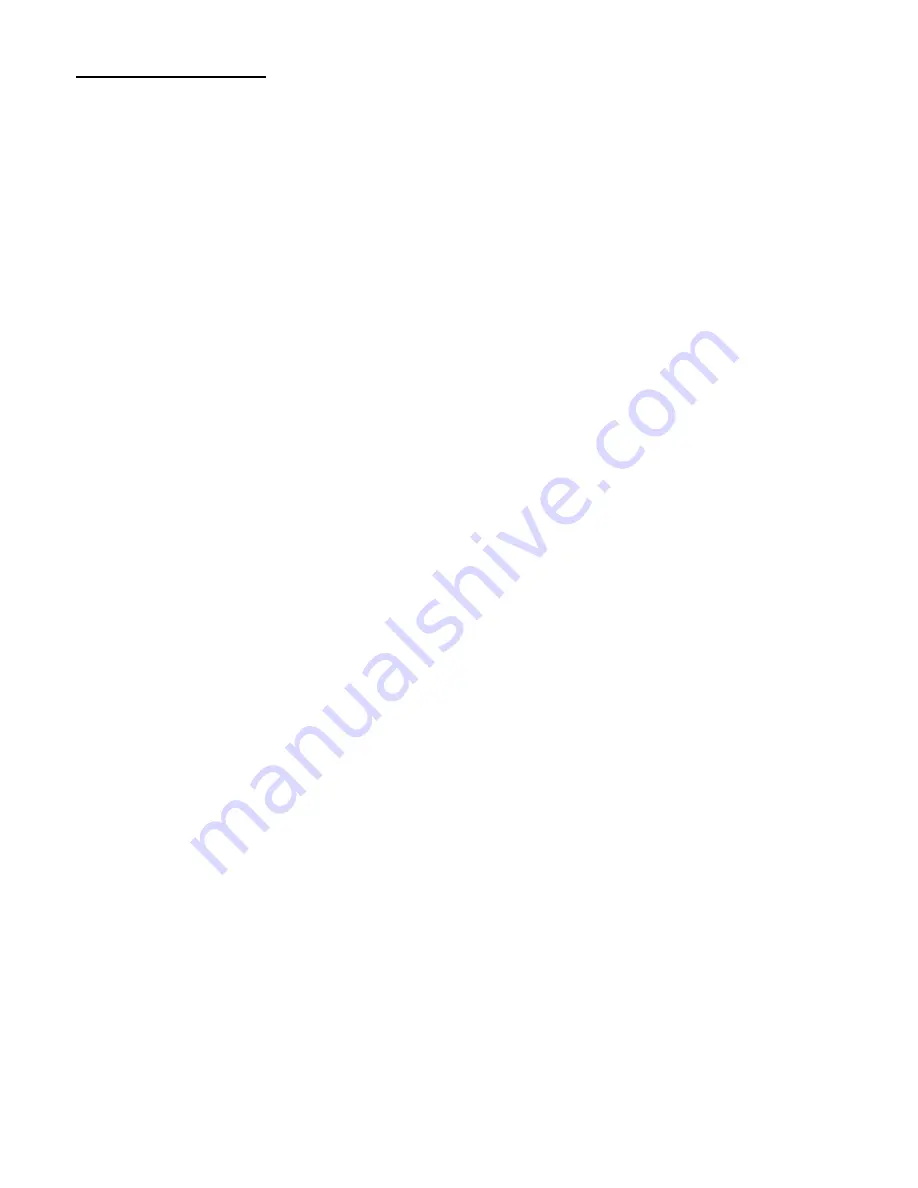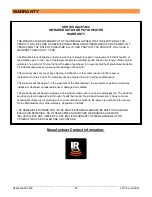
__________________________________________________________________________________________________________________
Series GA201-M2
21
LT126 June 2021
Care and Cleaning
Cleaning Stainless Steel Patio Heaters
Stainless steel is protected from corrosion by a thin layer of chromium oxide. This happens when oxygen from the
atmosphere (air) combines with the chromium in the stainless steel to form this layer of chromium oxide. This passive
film or layer protects the stainless steel from further corrosion.
Stainless steel is easily cleaned by many different methods.
General Rules for Cleaning Stainless Steel:
1. Handle stainless steel with clean gloves or cloths to guard against fingerprints.
2. Avoid the use of oily rags or greasy cloths when wiping the surface.
3. Where possible, after cleaning, thoroughly rinse with water.
4. Cleaning with detergents containing chloride must be AVOIDED.
5. Rubbing or wiping should be in the direction of the polish lines NOT against them.
6. DO NOT use solvents in closed spaces or while the heater is running or smoking.
Methods to clean Surface Contamination
Dirt
Dirt and soil can consist of accumulated dust and a variety of contaminates that come from many sources, ranging
from the wind to everyday use. Some may be easily removed, while others may require specific cleaners.
•
Frequently, warm water with or without a gentle detergent is sufficient.
•
Next in order, mild non-scratching abrasive powders such as typical household cleaners. These can be
used with warm water, bristle brushes, sponges, or clean cloths. DO NOT USE ordinary carbon steel
brushes or steel wool.
•
Next in order, for more aggressive cleaning, a small amount of vinegar can be added to the scouring
powder.
Cleaning should always be followed by rinsing with CLEAN HOT WATER and drying with clean towels.
Fingerprints and Stains
Fingerprints and mild stains resulting from normal use are the most common surface contaminates. These do not
affect the corrosion resistance and are easy to remove.
•
Can be removed using a Glass Cleaner.
•
Or gentle rubbing with a paste of Soda Ash (sodium carbonate) and water applied with a soft cloth.
Cleaning should always be followed by rinsing with CLEAN HOT WATER and drying with clean towels.
Oil and Grease
Oil and grease may carry grit, dust and sand which produce surface soiling, so periodic removal is necessarily.
•
Can be removed using soap or detergent and water or a combination of detergent and water plus a solvent.
Non-halogenated solvents, such as Acetone, Methyl Alcohol, and Ethyl Alcohol work well. The preferred
solvent is one that does not contain Chlorine.
Cleaning should always be followed by rinsing with CLEAN HOT WATER and drying with clean towels.
Preventative Care and Maintenance
EH105 – Custom Dome Cover – A custom protective cover designed to increase the life of your EvenGlo. Item is
not included with purchase, please contact your Representative for further details.





































